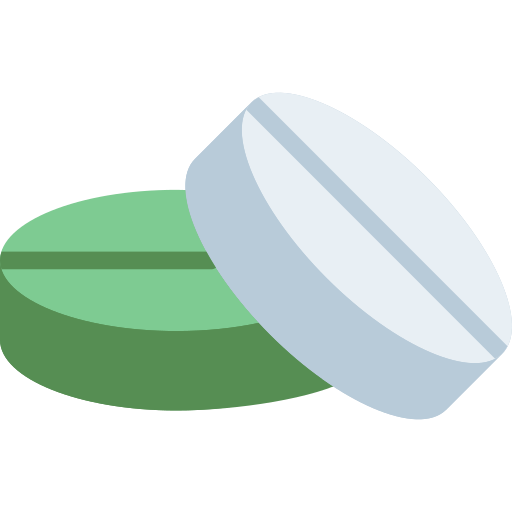
Product Details
Description
Cimetidine: Increased plasma concentrations of lornoxicam. (No interaction between lornoxicam and ranitidine, or lornoxicam and antacids has been demonstrated). Anti-coagulants: NSAIDs may enhance the effects of anti-coagulants, such as warfarin (see section 4.4). Careful monitoring of INR should be undertaken. Phenprocoumon: Decreased effect of phenprocoumon treatment. Heparin: NSAIDs increase the risk of spinal or epidural haematoma when given concomitantly to heparin in the context of spinal or epidural anaesthesia (see section 4.4). ACE inhibitors: The antihypertensive effect of the ACE inhibitor may decrease. Diuretics: Decreased diuretic and antihypertensive effect of loop diuretics, thiazide diuretics, and potassium sparing diuretics. Beta-adrenergic blockers: Decreased antihypertensive efficacy. Angiotensin II receptor blocker: Decreased antihypertensive efficacy. Digoxin: Decreased renal clearance of digoxin. Corticosteroids: Increased risk of gastrointestinal ulceration or bleeding (see section 4.4). Quinolone antibiotics: Increased risk of seizures. Anti-platelet agents: Increased risk of gastrointestinal bleeding (see section 4.4). Other NSAIDs: Increased risk of gastrointestinal bleeding. Methotrexate: Increased serum concentration of methotrexate. Increased toxicity may result. When concomitant therapy has to be used careful monitoring should be undertaken. Selective serotonin reuptake inhibitors (SSRIs): Increased risk of gastrointestinal bleeding (see section 4.4). Lithium: NSAIDs inhibit renal clearance of lithium, thus the serum concentration of lithium may increase above toxicity limits. Therefore serum lithium levels require monitoring, especially during initiation, adjustment and withdrawal of treatment. Cyclosporine: Increased serum concentration of cyclosporine. Nephrotoxicity of cyclosporine may be enhanced via renal prostaglandin mediated effects. During combined treatment renal function should be monitored. Sulphonylureas (e.g. glibenclamide): Increased risk of hypoglycaemia. Known inducers and inhibitors of CYP2C9 isoenzymes: Lornoxicam (as other NSAIDs depending on the cytochrome P450 2C9 (CYP2C9 isoenzyme)) has interactions with known inducers and inhibitors of CYP2C9 isoenzymes (see section 5.2 Biotransformation). Tacrolimus: Increase the risk of nephrotoxicity owing to reduced synthesis of prostacyclin in the kidney. During combined treatment renal function should be monitored (see section 4.4). Pemetrexed: NSAIDs may reduce renal clearance of pemetrexed resulting in increased renal and gastrointestinal toxicity, and myelosuppression.
Lornoxicam is contraindicated on the third trimester of pregnancy and should not be used during pregnancy in the first and second trimesters and delivery, as no clinical data on exposed pregnancies are available. There are no adequate data from the use of lornoxicam in pregnant women. Studies in animals have shown reproductive toxicity. There are no data on the excretion of lornoxicam in human breast milk. Lornoxicam is excreted in milk of lactating rats in relatively high concentrations. Therefore lornoxicam should not be used in breastfeeding women.
Renal impairment: Lornoxicam should be administered with precaution in patients with mild (serum creatinine 150-300 µmol/l) to moderate (serum creatinine 300 – 700 µmol/l) renal impairment due to dependency on renal prostaglandins for maintenance of renal blood flow. Treatment with lornoxicam should be discontinued if renal function deteriorates during treatment. Renal functions should be monitored in patients who undergo major surgery, with cardiac failure, receiving treatment with diuretics, receiving concomitant treatment with drugs that are suspected to or known to be able to cause kidney damage. Patients with blood coagulation disorders: Careful clinical monitoring and laboratory assessment is recommended (e.g. APTT). Hepatic impairment (e.g. liver cirrhosis): Clinical monitoring and laboratory assessments at regular intervals should be considered in patients with hepatic impairment as accumulation of lornoxicam (increase in AUC) may occur after treatment with daily doses of 12-16 mg. Apart from that, hepatic impairment does not seem to affect pharmacokinetic parameters of lornoxicam as compared to healthy subjects. Long term treatment (longer than 3 months): Regular laboratory assessments of haematology (haemoglobin), renal functions (creatinine) and liver enzymes are recommended. Elderly patients above 65 years: Monitoring of renal and hepatic function is recommended. Precaution is advised in elderly postoperative patients.
Non-steroidal Anti-inflammatory Drugs (NSAIDs)
Keep below 30°C temperature, away from light & moisture. Keep out of the reach of children.
-
Support 24/7
Call us anytime -
100% Safety
Only secure payments